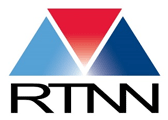
The RTNN has several new tools that have come online recently, and there are also several instruments scheduled to come into the facilities in the next few months. For technical questions about these tools or reservation information, please contact rtnanonetwork@ncsu.edu.
Online and ready for use:
- The NNF recently acquired a Heidelberg Instruments µPG 101 direct write lithography system. This system is equipped with a 375 nm ultraviolet diode laser capable of exposing feature sizes down to 0.8 µm on either positive or negative photoresists on sample sizes of 10 x 10 mm up to 5 x 5”. In addition to full exposure, it has the ability to create surface topographies for gray scale applications.
- The Analytical Instrumentation Facility’s Horiba H-CLUE Spectroscopy & Imaging Catholuminescence (CL) system is now available for users on the JEOL 7600 scanning electron microscope (SEM). CL is a non-destructive spectroscopy technique that provides electronic-structure information via optical emissions induced by the electron-beam excitation. Similar to photoluminescence spectroscopy, but performed in an SEM, CL spectra can be collected at nanometer spatial resolution to probe electronic-structure inhomogeneities in materials. The technique can be used to induce and image surface plasmon resonances in nanostructured materials. The H-Clue offers wide spectral range from UV to IR, 200-2200 nm (6.2 – 0.56 eV). The technique is particularly suitable for analysis of wide-band semiconductors, photonic and polaritonic nanostructures, dielectric oxides and minerals.
- A new detector named “Symmetry” is now available on the FEI Verios SEM at the AIF, providing superior orientation microscopy capabilities. The image at the right is a representative Electron Backscatter Diffraction (EBSD) map of a deformed Ni alloy specimen collected at ~1500 pixels per second, which is more than an order of magnitude faster than possible with the other detector. Speeds up to 3200 pixels/second are achievable, even at reduced operating voltages and beam currents, allowing data collection on poorly conducting specimens
Coming Soon:
- An Asylum Research Cypher AFM has just been installed in SMIF. It will be available to users in mid-April 2018.
- The FEI Krios Cryo-TEM in SMIF will offer atomic scale resolution of samples held at cryogenic temperatures. Its cryo-based technology and stability allow for single particle analysis and dual-axis cellular tomography of frozen hydrated cell organelles and cells. The TEM is equipped with a robotic loader, capable of handling up to 12 frozen hydrated samples for increased throughput.It will be available to users in late April 2018.
- Installation and start-up of an FEI Apreo SEM at SMIF is expected to begin this month. The new SEM should be available to users in early May 2018.
- CHANL will be bringing a new Rigaku SmartLab XRD system online in May/June of 2018. This system will be capable of looking at powders and thin film samples. In addition to traditional XRD experiments, it is also capable of in-plane diffraction and SAXS, and there are options for working with samples in inert environments and at various temperatures.
- The NNF has acquired an Annealsys AS-One 150. This rapid thermal processing tool is capable of running samples from small pieces to 6” wafers, up to 1300˚C with pressure ranges from atmospheric conditions to high vacuum. It will become available to users in May 2018.
- The AIF will install an FEI Talos TEM that will become available to users in late summer 2018. This instrument comes as the result of an MRI award granted to Professor Jim LeBeau.
- CHANL is adding a Bruker Hyperion FTIR microscope capable of transmission and attenuated total reflectance (ATR) measurements from 600 to 7500 cm-1 with 1 cm-1 spectral resolution. It will map spectra with a lateral resolution ranging from 20 to 250 µm. The system is projected to be online in summer or fall 2018.

